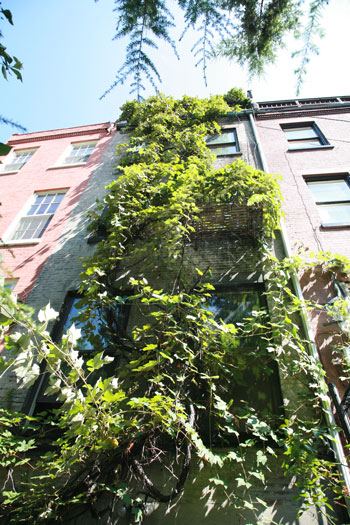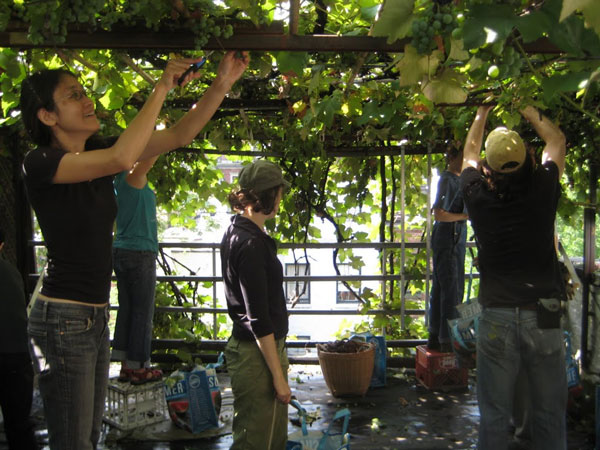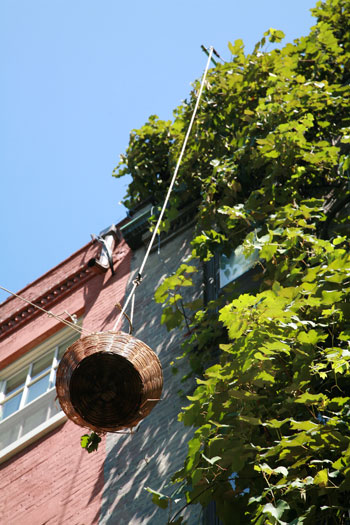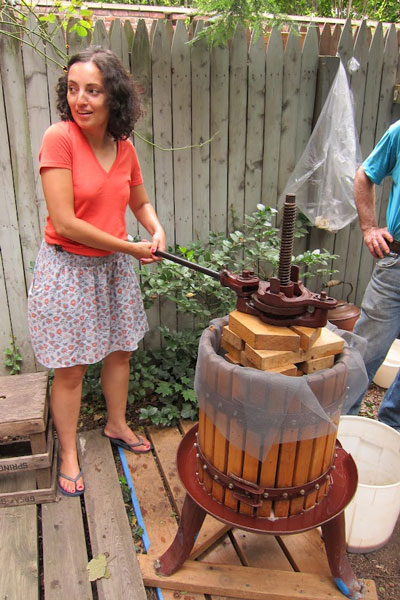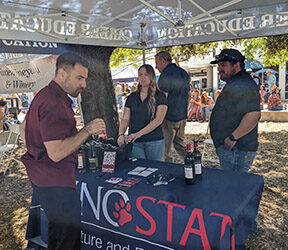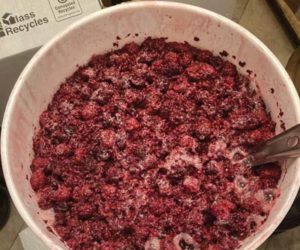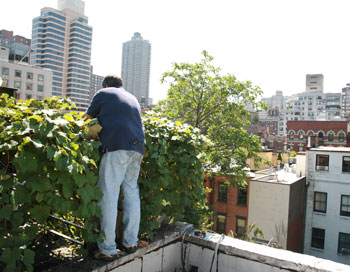
We caught wind of a vineyard found in the midst of the urban jungle of Manhattan, New York — one of the most densely populated spots in the world. I chatted with owner Latif Jiji who, along his wife Vera, created Manhattan’s only vineyard.
Tell me a little about your vineyard.
The first vine was planted in 1977. It is a Niagara grape that I purchased from a local nursery. Planted in the backyard of the house, the vine first meanders along the ground in our yard before beginning its 50-ft. (15-m) climb up the back wall of our brownstone to the roof of the building. We have a trellis that then extends another 45 ft. (14 m) across our roof. The vine’s vegetation is much denser closer to the back of the roof where the vine originates and thins as it extends across the roof.
We now have two vines that average somewhere in the range of 400–450 lbs. (180–200 kg) of grapes per year. I often begin daily tracking of the average Brix starting on August 1. When the grapes are ready for harvest, about 20–25 people show up to help as we need to harvest and move the grapes from the roof down to the backyard where they are washed and turned into must using a crusher/destemmer. We use a pulley system with a basket to lower the grapes from the roof to the backyard. We always hope for a rain-free day for harvest.
What was the inspiration?
Well my father made wine back when I was a kid growing up in Basra, Iraq. We had a vine growing in the center of our house’s courtyard, which also ran up to the roof. He was very unscientific about the whole winemaking process and yet year after year he produced very good wine. There was always sediment found at the bottom of the bottle and he never worried about the details. I started off my winemaking from a very calculating perspective, but with age have realized not to worry so much.
What are some of the biggest challenges you face in your vineyard?
Timing the harvest is probably one of the biggest challenges since grapes from one end of the vine to the other can have a wide range of sugar levels. On the side furthest from the vine roots, the foliage is least dense as are the grape clusters. This end seems to get better air flow and sunlight, so as a result the sugar levels on that end might be 18 °Brix while on the other side of trellis, where vegetation and cluster density is higher, the grapes may be found at 11 °Brix.
Timing the harvest is probably one of the biggest challenges since grapes from one end of the vine to the other can have a wide range of sugar levels.
Starlings will occasionally take some grapes, but I am a fan of starlings and not opposed to them getting a taste of the grapes. I have had no challenges when it comes to other pest or fungal problems with our vines.
What are some of your favorite aspects about the experience?
Before retiring as a professor of engineering, I applied for a grant to duplicate my experience with roof gardens on urban buildings. In the end, the grant was not funded, but it is nice to see rooftop gardens popping up in many urban environments. They are better for storm water run-off, cooling (shade) during the summer months, and solar heating during the winter months. They can be used for recreation as well as a calming place. Each of my vines take up 2–3 sq. ft. (0.2–0.3 sq. m) in my yard. I average over 400 lbs. (180 kg) of fruit per year with a maximum yield of 712 lbs. (323 kg). What better use of space?
